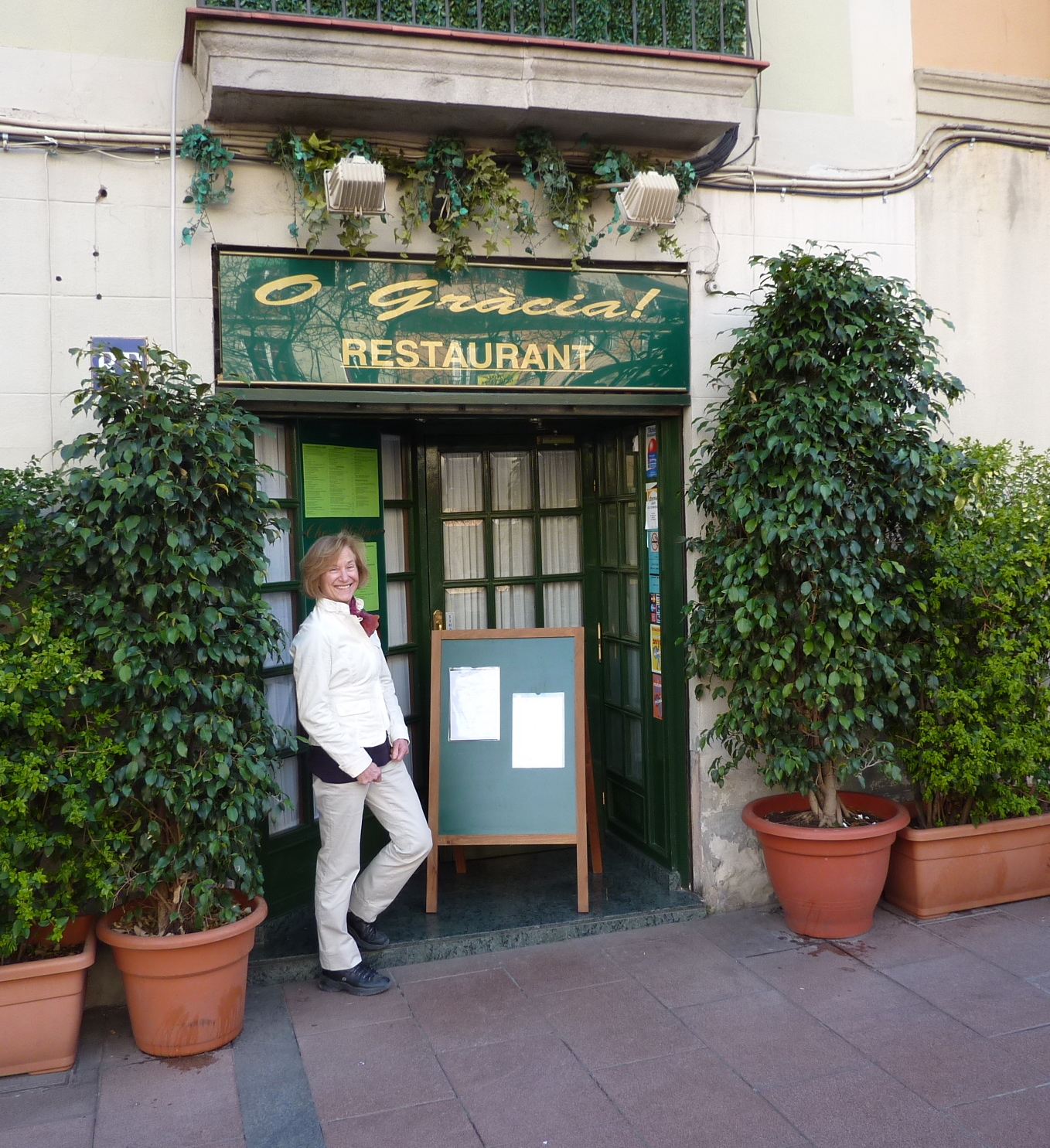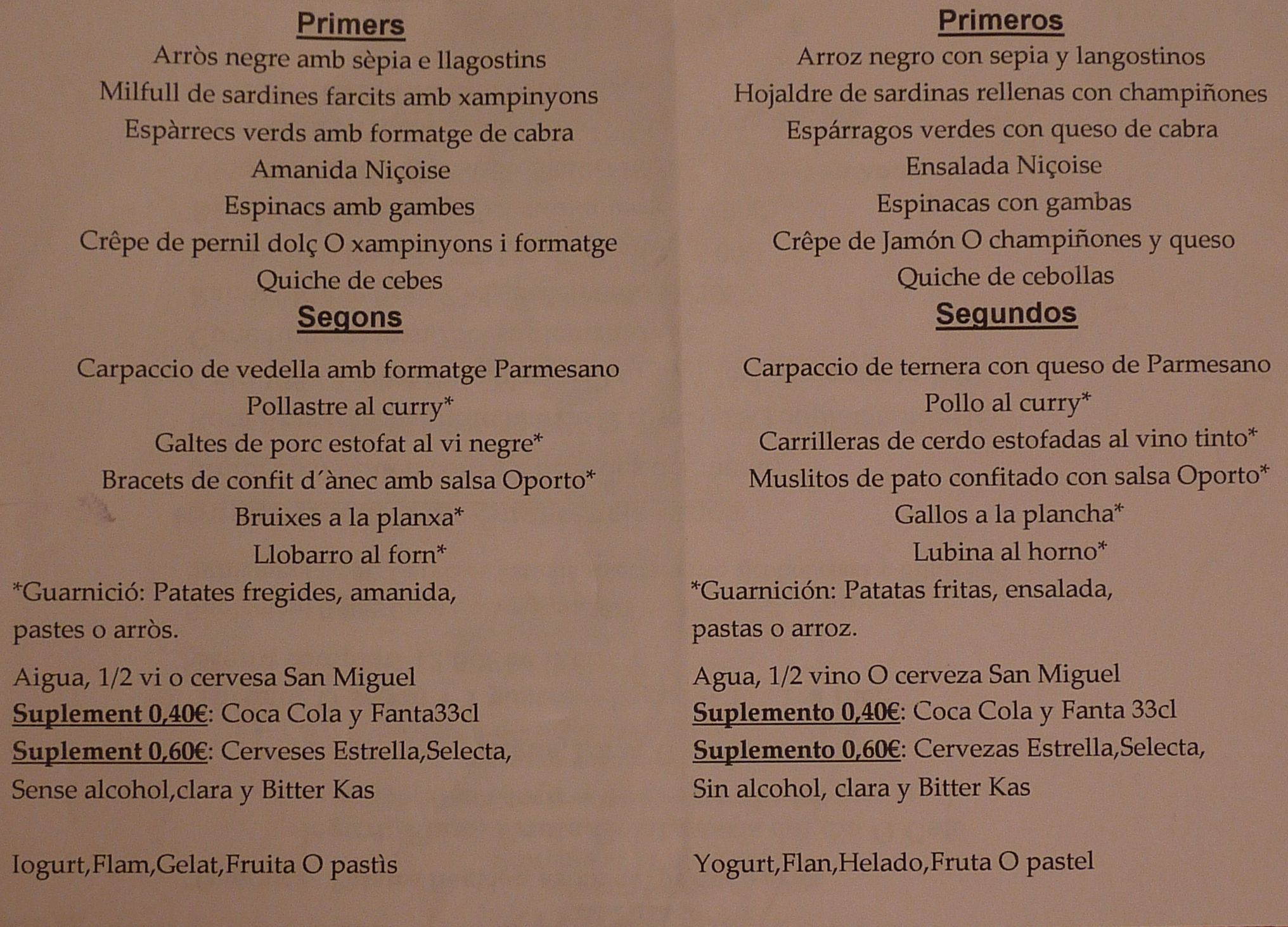Spanish Learning and Dining - Solving Lunch and Dinner Mysteries
 (Updated March 20, 2017)
(Updated March 20, 2017)
Dining in Barcelona
One of our pleasant surprises in Barcelona was the plethora of very reasonably priced restaurants, especially in our Gracia neighborhood.
A couple of days ago we stumbled upon what we thought was a real find: “O'Gràcia” - located on the “Plaça de la Revolució de Setembre de 1868” [sic]. We saw the evening menu advertised for 15 Euros, IVA (tax) included, and decided to give it a try.
O'Gracia is a small restaurant, with two tables to seat 4 or 5, and four tables for 2. We were early, with with only one other couple there. And, we were seated without a reservation. (But we read later online that we may have been lucky and also saw it listed in the Loneley Planet's Barcelona Guide - so others found it before us!)
Our Menu Choices
The menu, in Catalan and Castilian Spanish, showed a choice of seven(7) “Primeros” and six(6) “Segundos”.
Our Primeros
- “Esparragos verdes con queso de cabra”
(Green aspargus w/ goat cheese)
- “Crêpe de Jamón O champiñones y queso”
(Crepe w/ ham, champignons and cheese)
Our Segundos
- “Pollo a curry” (Chicken curry)
- “Lubina al horno” (Baked sea bass).
Included in the menu price was: a bottle of water, ½ liter of wine or local beer, as well as a choice of desserts. Both Primeros and Segundos were delicious, and when we asked for a copy of the menu as we were leaving, the maitre d' was happy to oblige.
Catalan Clues for Castilian Choices
We are using the menus to both learn about the local cuisine as well as to decipher/compare the Catalan and Castilian terms. For example: If we had not known “queso” (cheese), the Catalan “formatge” with its similarity to the French “fromage”, would have been a clue; on the other hand, the Catalan “pernil dolc” (ham) told us less than the Castilian “jamon”, which is close to the French “jambon”.
But there are plenty of words, where none of the languages we know is any help. We understood from the waiter that “Lubina” was a fish (“Llobarro” in Catalan), however, could not identify it, when it arrived on a plate, head and all. We later looked it up online and saw that “lubina” means “sea bass”.
We should have solved the mystery of “al horno” right away, as the Catalan “al forn” - close to Italian “il forno” or French “le four” (the oven) – would easily translate as “(baked) in the oven”.
We continue to have fun unraveling the mysteries of Spanish food and dining expressions. We also know very well that language courses such as our Spanish 1 and other beginner courses cannot cover the astounding variety of lunch and dinner offerings that we find here in Spain. It takes curiosity, persistence and, yes, a little dictionary work!
PS 1: A few days ago - on a Saturday evening - we went back to O'Gracia. We discovered that there was actually a second room in the back that seated another 24-26 people. The food was as delicious as the first time; the fixed price evening menu still included a Primero, a Secundo and a Postre (dessert), but the beverages were now extra and the price had increased to $16, still a deal!
PS 2: As we updated this post, we looked in vain for the O'Gràcia website. There is no TripAdvisor entry any longer and the Yelp entry seems to indicate that the restaurant is not open.

